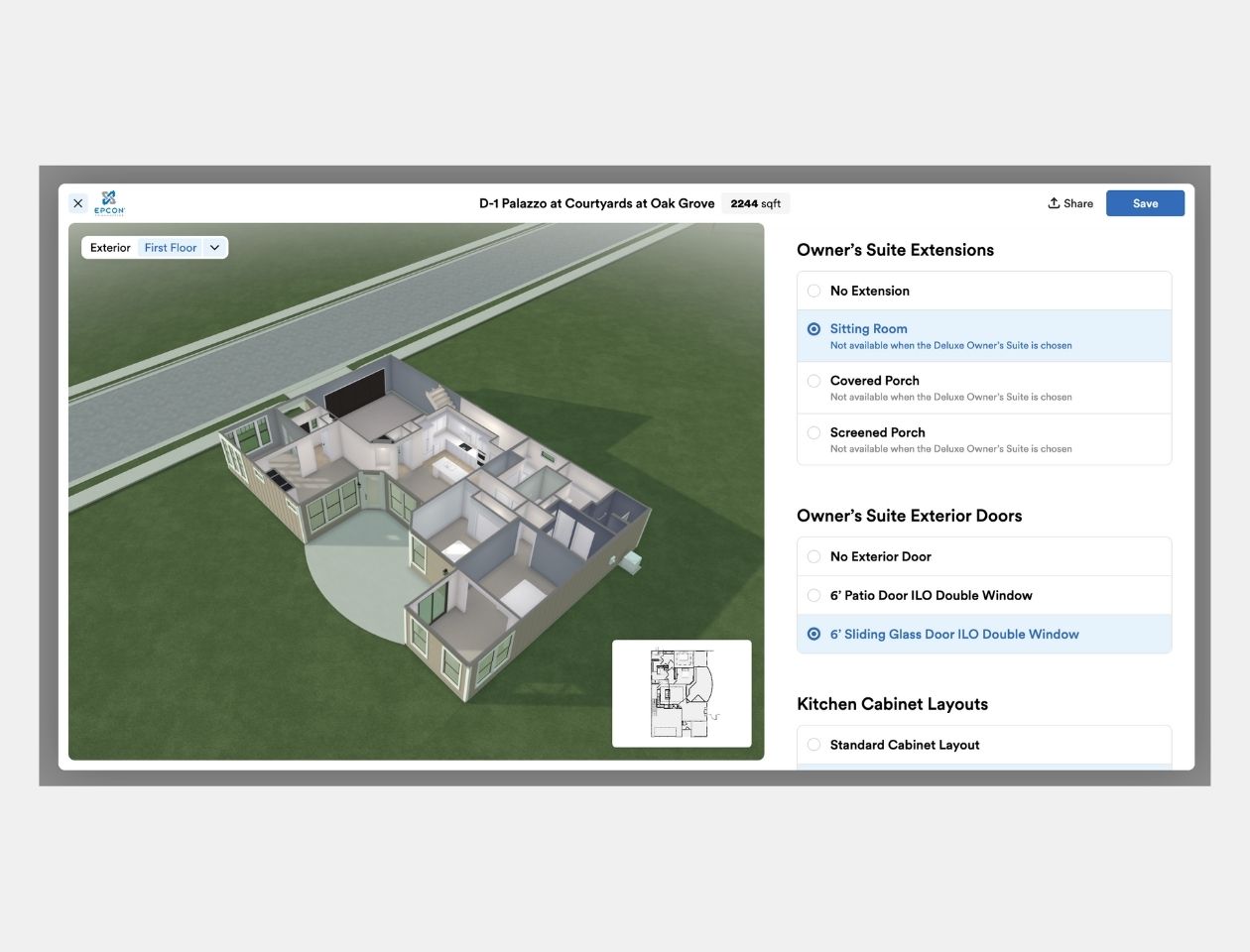Understanding the Root Causes of Employee Turnover in Homebuilding
Building homes is an immensely rewarding career that allows us to help make a customer’s dream come true. Over my two decades as a homebuilder, managing employee turnover is one of the most significant challenges I've encountered, and it’s something we hear from builders all the time.
When an employee leaves the organization, a manager or a colleague will temporarily take over their responsibilities until a replacement is found. That means spending less building the business and more time actively managing it on the front line, causing disruptions to other key personnel, adding stress, and stunting organizational growth.
Why Does Turnover Happen, and How Can It Be Prevented?
There are many contributing factors to employee turnover, but one of the most preventable factors is the lack of sufficient organizational support structure. A company's most valuable asset is its people, and the processes and systems in place are the tools they rely on to be successful and productive.
Well-managed homebuilding operations are predictable, sustainable, repeatable, and scalable. If there isn't someone on your team dedicated to focusing on these four primary initiatives, then stop reading this blog and find one!
The Importance of Systems and Processes in Homebuilding
Think about a championship NFL game. 11 on 11, and everyone on the field has a unique role and skill set. It’s the last play of the game, and the ball is on the 1-yard line. One play determines the game's outcome; the winner takes all, and the loser walks off the field in misery. Coaches of the respective teams choose carefully from their playbooks. How thick is your playbook? Do you have the right play to win the game? Do your 11 players know how to carry out the play you are about to call?
The most successful teams have the best coaches who build a solid playbook, train diligently, are well-disciplined and execute per the plan when it matters.
Homebuilding teams are not much different than a football team. Systems and processes need to be in place in order to achieve organizational goals and reduce the impact of employee turnover. As a result, turnover itself decreases as people have a better understanding of what their roles are and how to perform them in the absence of others.
When I was running production, I had a top-performing 25-year-old superintendent who had been with the company since graduating with a degree in construction management. He was a problem solver, and I rarely received calls from him with concerns. His customer and vendor ratings were off the charts, and he set much of the company culture that has helped attract other stellar employees.
His CSAT scores were the highest in the company at 96%, but his average build time was 10 days more than the template, and the average variance was 0.5% higher than the target. You could tell he cared deeply about what he was doing, but the delays in home delivery and excessive variances were reducing profits.
A short time later, he was offered a role as a Project Manager with a 20% pay increase for a national builder on the other side of town. He was tired of the stress involved with fielding constant questions about conflicting construction documents and having to schedule rework and resolve customer issues. The kind of thing that happens when someone is looking for a change of scenery, even if it inevitably means the same issues will eventually creep in.
Optimizing Your Back-Office Operations to Retain Talent
As a company, it was a great opportunity to re-evaluate our commitment to our team and what we could do to make them happier and more productive.
Most of the time, the root cause of lost build time and financial variance is directly related to back-office operations, and field staff often have little control or input over the way those operations affect them.
When a customer selection fails to make it to the field set of plans, who (or what) is at fault? Should we punish the superintendent for being short on materials when we’re building a new structural option for the first time? Absolutely not!
Field teams have the most challenging jobs in the business, but they typically go unnoticed. Between 6 a.m. and 6 p.m., the average construction manager has conversations with trades in the field, their respective office staff, material suppliers, building inspectors, colleagues, and customers as they manage thousands of parts and pieces to build 10-20+ homes at any given time amidst ever-changing municipal requirements and weather conditions.
The sheer volume of daily communication is overwhelming for most, but the best in the business find a way to manage it effectively.
If you have a superintendent situation similar to the one I experienced, I suggest finding a way to pay the 20% increase to keep him around. Give the team a budget to enhance operational efficiencies that increase internal satisfaction scores. Build from within. This is how builders can succeed in the long term.
Your people are your business; without them, you can expect to chase your tail endlessly. The key to overcoming the damage from turnover is to systematize everything you can. The results will be twofold: People will have a better understanding of their roles, and there will be less damage when turnover happens.
.png)
6 Strategies to Retain Great Employees in Homebuilding
1. Establish a Single Source of Truth for All Knowledge - Your Playbook!
- Agree on architectural standards, construction details, specifications, and scopes of work and make them accessible to all necessary stakeholders.
- Revisit your core business logic regularly and assign a gatekeeper to make changes as needed.
2. Hire the Best Leaders and Communicators
- Offer a base salary above market price to lead your field teams.
- Base your company bonuses on customer satisfaction scores and net profit related to the company’s operational efficiency (like the number of homes closed per employee) so your employees have skin in the game.
3. Invest in Systems, Processes, and Software That Allow Your Business to Be Predictable, Sustainable, Repeatable, and Scalable
- Think about homebuilding software as an employee enhancer, not an employee replacement. With the right software supporting operations, your organization is more desirable to work for—both for your staff and your trades and vendors.
- When your business is operationally sound, the software at the hub of your operation allows you to scale in volume and revenue with a minimal increase in staff. Expect the most effective software to cost as much as or more than your highest-paid employee, but consider that, at the end of the day, it is still making you money, not costing you money.
4. Define the Roles of All Staff
- Use a responsibility assignment or ‘RACI matrix’ to clarify responsibilities.
5. Capture Feedback from Everyone Involved
- Identify where there are process failures and breakdowns.
6. Define What Success Looks Like — and Celebrate When You Achieve It
- When everyone knows what goal you’re marching towards, there’s no confusion over what you should be focusing on.
- And then, once you reach your goal, celebrate and acknowledge the hard work it took to get there.
By adopting these strategies and leveraging homebuilding software like Higharc to streamline operations, homebuilders can significantly reduce employee turnover and create a more stable, productive, and satisfied workforce.
See higharc in action
Discover how Higharc can empower your team to conquer change, modernize your buyer experience, and decrease cycle times.
Book a demo



.png)




.png)



.jpg)








%20(1260%20x%20960%20px).jpg)
%20(1260%20x%20960%20px).jpg)
.jpg)

.jpg)



















